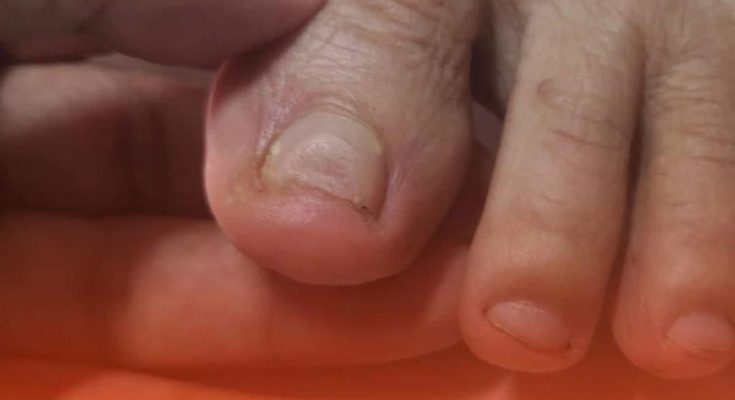Your feet go through a lot every single day. They support your weight, help you move, and keep you balanced. But when was the last time you actually looked at your feet and considered what they might be trying to tell you? Health professionals are now raising red flags about two silent threats that can affect your feet without showing obvious signs at first—leading to serious infections, amputations, or even life-threatening conditions if left unchecked.
The truth is, your feet can be one of the earliest indicators of deeper health problems. Changes in foot appearance, sensation, or nail condition might not seem like a big deal, but they could be your body’s way of alerting you to major issues like heart disease or diabetes. That’s why it’s more important than ever to pay attention to the subtle signals your feet may be giving you.
When it comes to heart disease, your feet can actually be among the first areas to show symptoms. That’s because they’re the furthest part of your body from your heart, making them particularly sensitive to circulation issues. Poor circulation means blood isn’t flowing as efficiently as it should, and your feet often bear the brunt of that.
Pharmacist and health expert Noel Wicks shared with the Express that the small blood vessels in your toes are especially susceptible to blockages caused by fatty deposits—an early indicator of heart disease. Wicks emphasizes that monitoring your foot health, including your toenails, isn’t just about comfort or appearance—it’s about staying ahead of serious health issues. What might look like dry skin or mild discoloration could actually be a sign of something far more serious.
According to WebMD, people experiencing early signs of heart-related foot issues may notice symptoms such as consistently cold feet. This happens because poor circulation makes it difficult for warm, oxygen-rich blood to reach your extremities. You might also observe that minor cuts, scrapes, or blisters on your feet are taking longer than usual to heal—another clear warning that blood flow is compromised. If walking causes pain in your feet or legs, only to subside with rest, you may be experiencing something called claudication, which is often linked to restricted arteries. Discoloration in the feet, including a pale, blue, or purplish tint, should also raise concern. Cramping in the hips, thighs, or calves—especially while walking up stairs—could indicate circulatory problems as well. While any of these symptoms might appear minor at first, ignoring them could allow more severe issues to take root. If they persist or worsen, it’s best to speak with a medical professional right away.
But your feet don’t only hint at heart problems. They’re also a key early warning system for diabetes. Diabetes can compromise both blood flow and nerve function, often making the feet the first place where symptoms appear. From numbness and tingling to unusual sores, your feet can be telling you that your blood sugar levels are out of balance—sometimes long before other parts of your body show any sign of trouble.
According to the Centers for Disease Control and Prevention (CDC), diabetes-related foot ulcers can easily become infected and fail to heal. In cases where infections worsen, surgical amputation of a toe, foot, or leg might be necessary to prevent the infection from spreading throughout the body. In fact, the CDC reports that a staggering 80% of lower limb amputations in the United States are due to complications from diabetes. This is a sobering reminder of how serious untreated foot issues can become if the underlying diabetes isn’t addressed.
There are several symptoms to watch for if you’re worried about diabetic foot problems. These include pain or cramping in your buttocks, thighs, or calves during physical activity. You might also feel tingling, burning sensations, or even sharp pain in your feet. A diminished sense of touch or inability to feel heat and cold effectively can be another early sign of nerve damage. Over time, the shape of your feet may change, and you could notice a loss of hair on your toes, feet, or lower legs. Dry, cracked skin may appear, and your toenails might become thickened and yellow. Infections such as athlete’s foot, particularly between your toes, are more common in diabetics. Blisters, ulcers, infected corns, and ingrown toenails should all be taken seriously, as these small problems can escalate quickly in individuals with diabetes. Even if these signs seem minor or don’t cause much discomfort, they shouldn’t be brushed aside. Many people discover they have diabetes only after experiencing foot complications—making early detection all the more critical.
If you recognize any of these symptoms in yourself or someone you care about, it’s vital to consult a healthcare provider as soon as possible. The earlier diabetes is diagnosed and managed, the better the chances of avoiding long-term complications like ulcers, infections, or amputation. Don’t wait until it’s too late—being proactive can make all the difference.
Your feet are like a built-in alarm system, sending subtle signals when something in your body isn’t working right. Whether it’s blocked arteries, reduced nerve function, or blood sugar problems, the feet are often the first to react. Ignoring the signs might seem easier in the short term, but it can lead to irreversible damage down the line. Taking a moment each day to inspect your feet can be a life-saving habit.
So next time you kick off your shoes at the end of a long day, don’t just treat it as a chance to relax. Take a good look at your feet—check the color of your skin, the texture of your nails, and how they feel. Are they colder than usual? Do you see any swelling, dryness, or cracks? Are there any sores you don’t remember getting? Your feet might not be able to talk, but they’re definitely communicating. And what they’re saying might just save your life.



